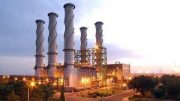 As the profound global impact of Covid-19 continues to unfold, those whose job it is to forecast the future have had to scramble for their calculators. This has proved just as true for the widely cited projections of global energy use provided by the International Energy Agency’s World Energy Outlook (WEO), which saw its 2020 edition released in October.
As the profound global impact of Covid-19 continues to unfold, those whose job it is to forecast the future have had to scramble for their calculators. This has proved just as true for the widely cited projections of global energy use provided by the International Energy Agency’s World Energy Outlook (WEO), which saw its 2020 edition released in October.
These long-term outlooks usually feature incremental changes from one year to the next, but the central ‘Stated Policies Scenario’ of WEO 2020 included some major revisions, due to a combination of the Covid-induced drag on demand growth and the ongoing rise of wind and solar power. Coal power has been on the receiving end of both impacts, with the result that its trajectory to 2040 has been flipped from a modest increase to a 10% decline in total generation.
Nowhere was this reassessment more pronounced than in the numbers for India: whereas a year ago nearly an additional 190 GW of coal was expected to come online by 2040, now only around 30 GW is added in the central scenario. This is partly down to a worrying 15% downgrade in the country’s electricity growth over the period, but also to the appearance of an additional 100 GW of solar power.
In January last year, the government announced an ambitious target of 450 GW of renewable energy by 2030, building on an earlier goal of 175 GW by 2022 – the vast majority of both targets consists of solar and wind power. Although both these sectors are burgeoning, only around 40 GW of both sources is currently installed, and there is clearly much work to be done. Indeed, the latest WEO sees India fall somewhat short of its 2030 ambition, before projecting a meteoric rise to 840 GW of wind and solar over the following decade.
Where do these lofty ambitions for renewables leave coal? With over 260 GW of coal capacity in 2040, India would still boast the world’s second largest coal fleet after China.
This coal power is not merely an inconvenient relic of a time where growth trumped climate goals, but an essential component of India’s energy mix which is hard to replace. Owing to limited domestic natural gas reserves, gas power has never been seen as a viable option for the country, and growth in nuclear power is expected to be slow.
Coal will continue to make a vital contribution by providing back-up power, and will doubtless be required to run at full steam during evening periods of peak demand. For the time being, a coal phase out of the kind seen in Europe is simply not on the cards.
There is a risk that this diminished role for coal power will encourage neglect of a sector which still looms so large in India’s future. Not all coal power is alike, and there is considerable room for improvement in India’s fleet, made up largely of inefficient generating units with little in the way of pollutant controls. This capacity can either be left alone, or invested in and transformed into a cleaner, modern fleet, fit for the demands of the next two decades and beyond.
While the Government of India seems willing to take on this mission, the country’s thermal generating companies are currently faced with a perfect storm of challenges. Investing in new, cleaner power plants or modernising existing units is difficult when the same plants are facing a future of playing second fiddle to renewables – reduced operating hours means reduced income. Compounding this, India’s electricity distribution utilities or ‘discoms’ are cash strapped due to highly regulated retail tariffs and huge losses within the transmission system. They are therefore not in a good position to buy coal power at a premium.
At the forefront of India’s drive to clean up coal are revised emissions regulations introduced in 2015, which have required nearly all units to install costly equipment to remove harmful sulphur dioxide gas.
This equipment has long been standard for plants in Europe and North America, and in China since 2012. Although the new regulations are gradually bearing fruit, much of the industry has been slow to respond, pushing back the compliance deadline to 2022 and still looking for clarity over how their investment can be recouped. Accompanying regulations for nitrous oxide emissions have been successfully challenged and watered down for all but the most recently built plants.
On top of this, coal plants face escalating costs from turning their output up and down in response to renewable generation.
This kind of ‘flexible’ operation reduces efficiency and increases operating costs, while placing increased strain on equipment which ultimately reduces its lifespan. By 2030, it is thought that around a third of the country’s coal plants will have to make major shifts on a daily basis, playing havoc with hardware designed to operate continuously.
Regulators are currently grappling with how to compensate this kind of operation within India’s highly regulated wholesale market. Since 2017, India’s government has mandated that all new coal units should adopt more efficient ‘supercritical’ technology as a minimum, and a cohort of state-of-the-art ‘ultrasupercritical’ plants is under construction around the country.
However, given the limited need for new capacity, further use of these technologies will require a more concerted effort to close older units and replace them. At the very least, many of these inferior plants will require extensive overhauls to get them running more efficiently. Such an approach would echo China’s aggressive overhaul of its dirty coal fleet in the 2000s. But investment on this scale is also a difficult prospect against the backdrop of the sector’s bleak finances.
Ultimately, the extent to which India’s coal fleet can be transformed into a less embarrassing partner for renewables will depend on a willingness to invest and, most importantly, cultivation of a better environment for investment in cleaner coal power.
This may be politically unpalatable, but can be seen as merely the other side of the coin in the country’s drive to create its new, largely solar-powered grid.
A viable market for modernising India’s coal plants must first aim to express the true value of this flexible power source to India’s electricity supply; still more, it should endeavour to place a value on cleaner coal – in cleaner air, public health, and reduced carbon emissions.
Toby Lockwood





